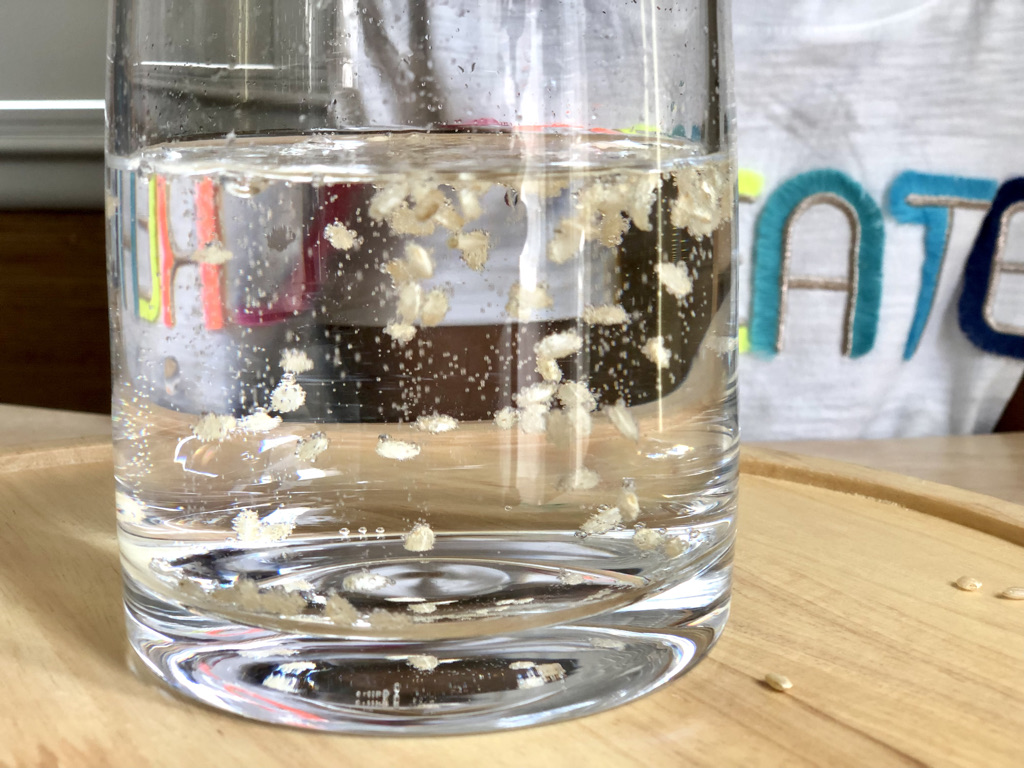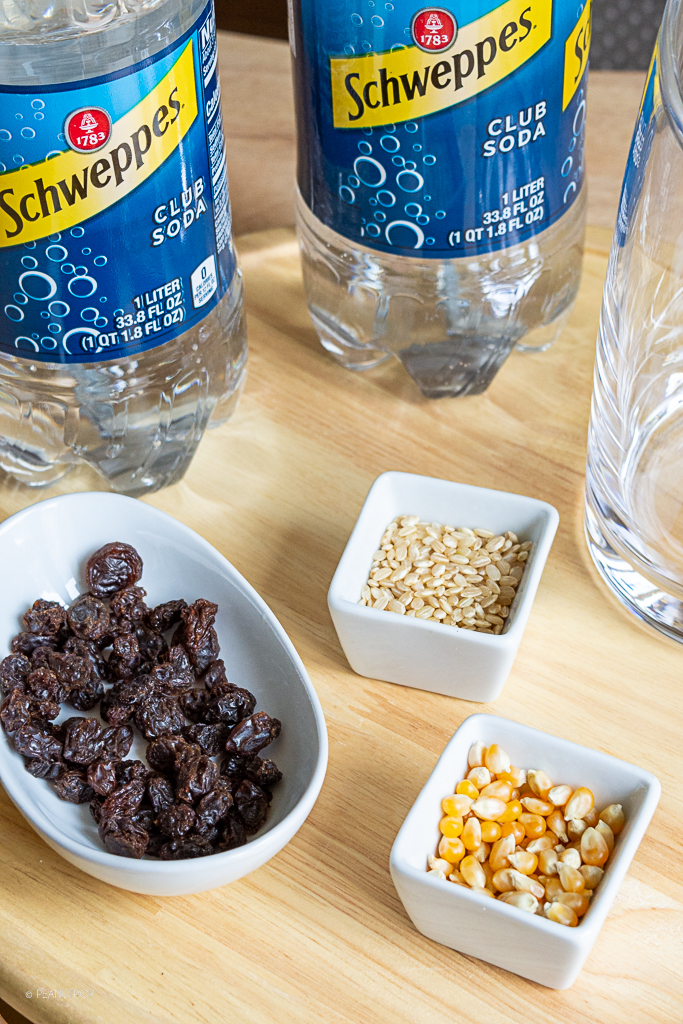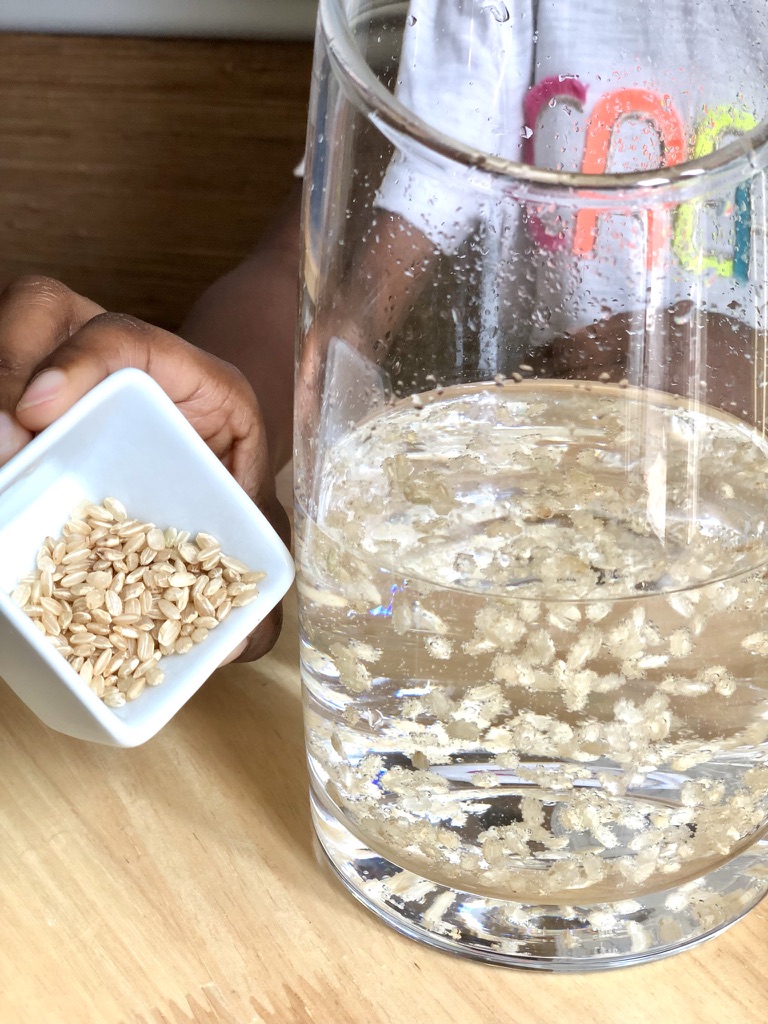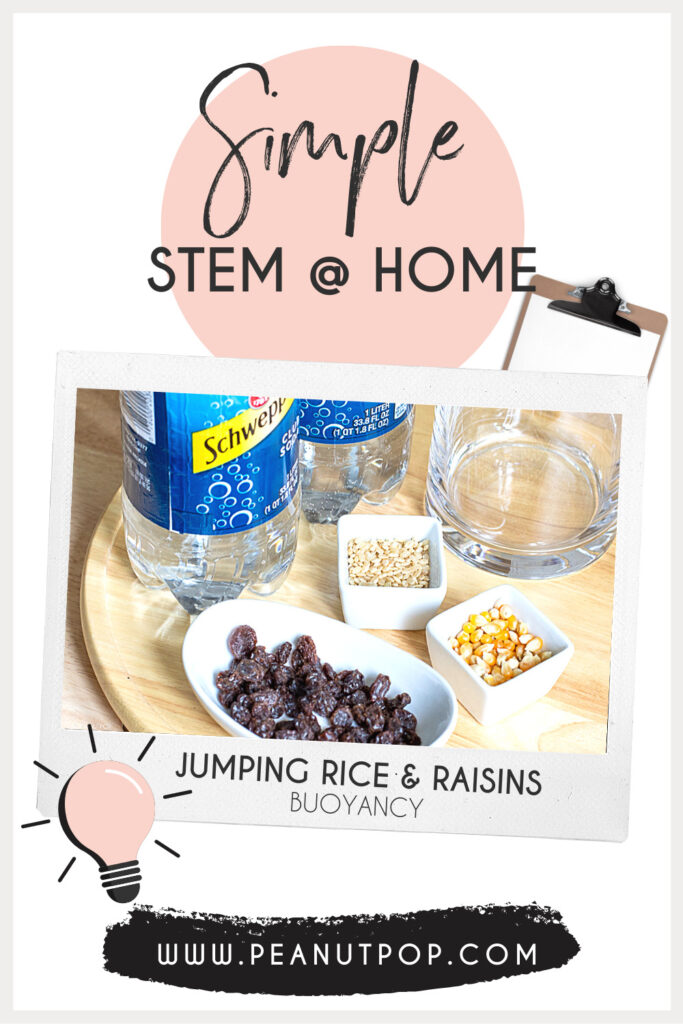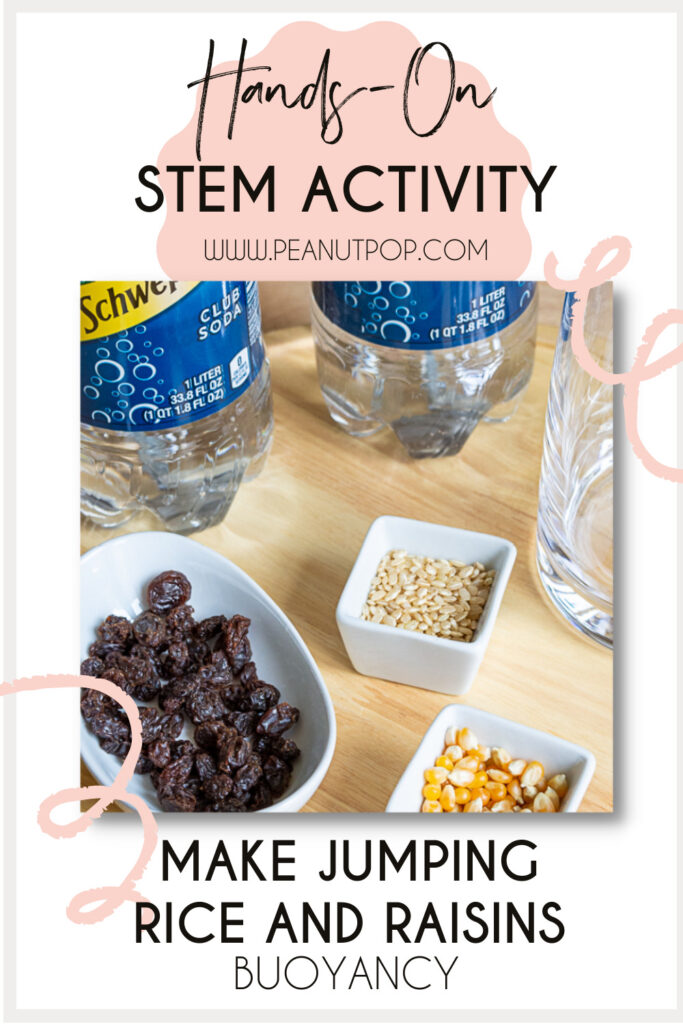What makes an object float or sink? Use this jumping rice and raisins activity to explore the question and get a simple STEM introduction to buoyancy.
This Jumping Rice and Raisins STEM project is the second installment of simple STEM projects you can do at home. If you haven’t already, check out the Rainbow Water Tower STEM activity on density (the mass (weight) of an object compared to its volume (size)). It is helpful to understand density before diving into this activity.
Here we explore buoyancy by making jumping rice and raisins. Buoyancy is the measure of how an object floats or sinks in a fluid. Items that float are less dense than the fluid they push aside – causing them to fall. Adding molecules to the water makes the object less dense, which allows it to float. The added molecules in this experiment come from carbon and other ingredients found in the club soda.
Gather the materials below for this buoyancy and explore how to make jumping rice and raisins. Once done, we have more STEM activities you can do in 20 minutes or less.
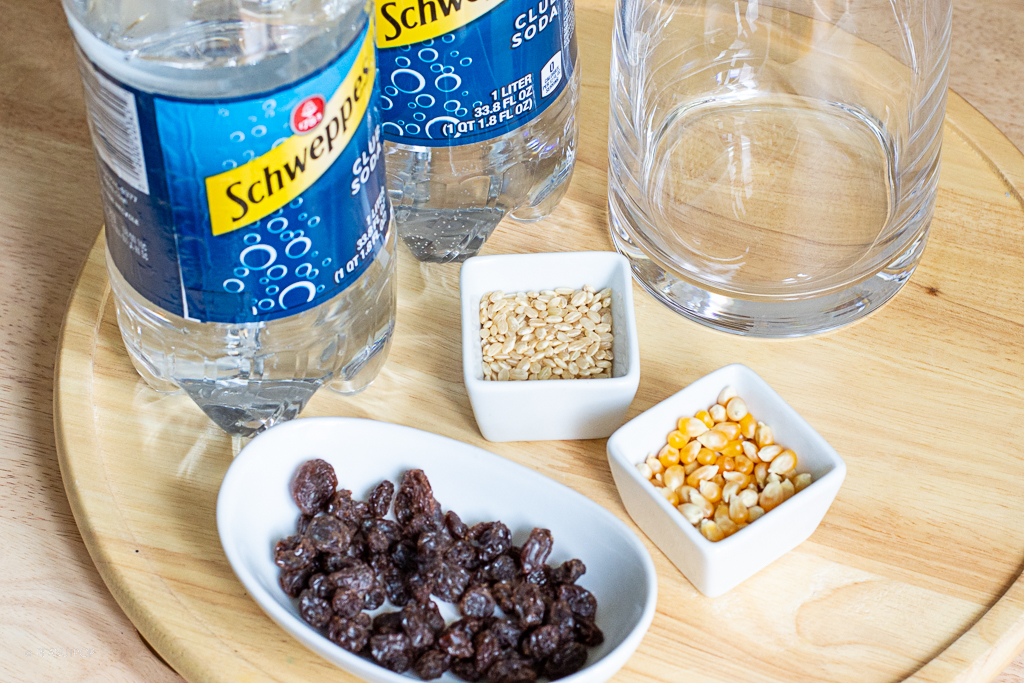
Materials List
- 2 liters of club soda
- A medium sized vase or clear container
- 1 tablespoon each: rice, raisins, and popcorn kernels (optional)
What to Expect
The raisins are heavier than the club soda, so they naturally sink to the bottom of the container. The carbon dioxide bubbles attach to the raisins, causing them to rise to the top. Once at the top, the bubbles pop, and the raisins sink back to the bottom. More bubbles attach, and the jumping objects cycle repeats.
When carbon dioxide attaches to the objects, it changes the density. This change in mass and volume allows the item to float. Once the bubble or carbon pops, it changes the density again, and the object sinks.
Jumping Rice and Raisins Directions
- First, pour the club soda into the vase until it is three-quarters full.
- Toss in raisins. Be sure to separate the raisins before adding them to the club soda.
- Next, allow raisins to sink and wait a few seconds while the carbon dioxide attaches.
- Watch them rise and jump around as the carbon dioxide bubbles pop sending them back to the bottom of the vase.
- Count how many times the raisins jump from the bottom. (It is much harder to count the rice.)
- Finally, once the raisins settle down, repeat the steps with the rice and popcorn kernels.
